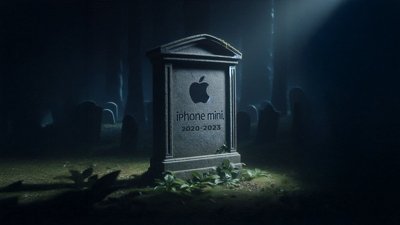For one-tenth the cost of an Apple Vision Pro, the Viture One XR glasses put a comfortable display on your face to use for most digital activities.
Alongside the release of Apple Vision Pro, AR and VR and the idea of "spatial computing" have become a frontier for experimentation.
XR is a blanket term for AR/VR and its intersections. Viture has done this by making a pair of pretty inconspicuous glasses that, once plugged into a device, serve as a screen for work or play.
VITURE One XR Glasses - Design
The Viture One glasses come in a regular and Lite version. The difference is mainly in price and connection, and the Lite has non-dimmable outer lenses.
Otherwise, both look very similar and perform the same.
The Viture One is compatible with most iPhones given sufficient adapters but is generally best for USB-C devices.
VITURE One XR Glasses - Specs
| Dimensions (Glasses) | 163.0(L) x 47.7(W) x 53.7(H) (mm) |
| Dimensions (Case) | 186.0(L) x 76.0(W) x 76.0(H) (mm) |
| Weight (Glasses) | 78 g |
| Weight (Case) | 280 g |
| Myopia | 0.0 D~-5.0 D |
| Resolution | 1920(H) x 1080(V) pixel RGB per eye |
| Contrast Ratio | 50000:1 |
| Colors | 129% sRGB |
| 2D/3D | Yes |
| Binocular Fusion | Yes |
| FOV | 43 degrees |
| Brightness | 1800 nits |
| Brightness Control | 7 levels |
| Acoustic System | Inverse sound field |
| Speakers | Built-in spatial sound |
| F0 | 270 Hz 40 |
| Wear Detection | Yes |
| Wearing Time Suggested | 3~4 hrs |
| USB-C to Magnetic Connector Cable | 1.1m(L) |
| Nose Pad Sizes | 1, 2, 3, 4 |
VITURE One XR Glasses - Use and experience
The glasses fit well on the face, and there's not too much experimentation in finding your proper focus if you're nearsighted.
Given our testing on an iPhone 14 Pro, we could not test the 3D and spatial video features. In order to use on a pre-15 iPhone, two special adapters are needed, which incurs extra cost and bulk when in use.
 VITURE One XR Glasses review - The adapters for Lightning with the Lite on top and the adapter for USB-C plus charging on the bottom.
VITURE One XR Glasses review - The adapters for Lightning with the Lite on top and the adapter for USB-C plus charging on the bottom.Still, the amount of dongles doesn't make much difference when your iPhone is in your pocket and the glasses are on your face.
For use on MacBook and iPad, they simply mirror your screen onto the glasses if you don't use the SpaceWalker app by Viture.
The sound quality is decent, with the glasses having built-in spatial sound through the speakers near the ears. Due to the fact they are just small speakers near your ears, we recommend putting your AirPods (not Maxes) on if you want to use the Viture One in a public space.
The lighting buttons on the Lite and the regular versions are great for use in bright and dark environments. For watching TV or movies, dimming the outer lenses was akin to the darkness of a theater, perfect for focus.
VITURE One XR Glasses - SpaceWalker App
The best use of the Viture glasses is by using the included SpaceWalker App on iPhone, Android, or MacBook.
Once you plug it into your iPhone and open the app, you're greeted by a main menu and settings options. There is also a display of apps and websites, which include YouTube, the Viture Browser, a Viture document viewing app, and more.
You can use your phone as a pointer or trackpad to navigate these menus, which works pretty accurately. You can also use your phone keyboard to type and search.
The main menu has many apps, and the browser is good for casual use. Overall, using SpaceWalker on the phone is best for entertainment or quickly looking at large files in a professional situation.
On the MacBook, you choose your screen setup out of six options: an ultra-wide view, vertically stacked monitors, and more. SpaceWalker on the Mac can quickly boost your one-screen laptop into a three-screen productivity boost, which we found exciting.
We wrote most of this review using the Viture Lite glasses in our workflow on our M2 MacBook Pro, and it performed well.
In a way, the UI of both SpaceWalker apps makes the Viture One glasses a companion to your Apple ecosystem for both work and play, which is satisfying.
VITURE One XR Glasses - Fashionable XR experience
The Viture One XR glasses are great for entertainment and convenient for work. Your experience on your iPhone will be different than on your iPad or Mac, making the glasses a fun and useful AR multitool.
There are a lot of ways you can use these glasses to potentially enhance your work, gaming, video consumption, and more. However, all the bells and whistles have separate price tags, such as the mobile dock and neckband.
Knowing how you'd want to use an XR product before spending $300+ on accessories is important. Still, we think the Viture One gives a lot of nice uses for everyone, depending on what bundle you buy.
VITURE One XR Glasses Pros
- Inconspicuous and comfortable design
- High resolution display
- Versatile for work and play
- App enhances functionality for different devices
VITURE One XR Glasses Cons
- Additional accessories needed for maximum utilization
- Complex setup for older iPhones
- Users must identify clear use cases
Rating: 3.5 out of 5
Where to buy the VITURE One XR Glasses
The VITURE One XR Glasses are available on the Viture store and Amazon. Below are a few bundles:
- iPhone 15 Pack ($498)
- Lightning iPhone Pack ($508)
- Neckband Bundle ($556.20)
 Thomas Sibilly
Thomas Sibilly









-m.jpg)






 William Gallagher
William Gallagher
 Malcolm Owen
Malcolm Owen
 Christine McKee
Christine McKee
 Wesley Hilliard
Wesley Hilliard

 Marko Zivkovic
Marko Zivkovic
 Andrew O'Hara
Andrew O'Hara
 Amber Neely
Amber Neely








3 Comments
And they just released their viture pro glasses which is almost the same but with a better and darker film and a bigger 120hz brighter display. Now to the Xreal lineup!
You see a lot of comments on the web dissing products like this (not here though) but I think the concept is cool. If I were someone who did a lot of commercial flying, I’d get a pair. What a convenient way to work on your computer in private or watch a movie.